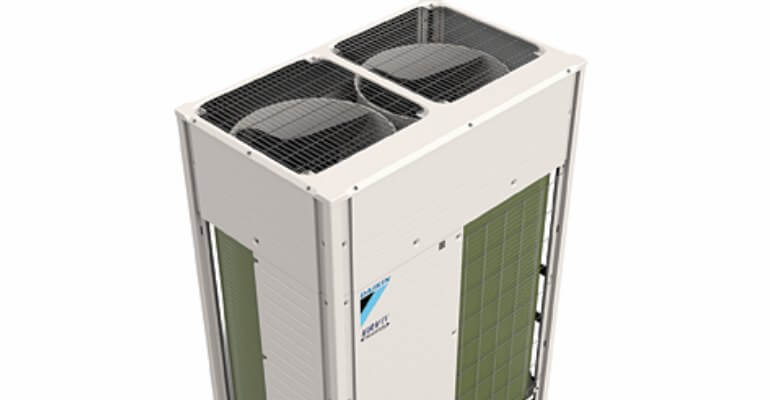Jesse Remillard and Valerie Eacret, ERS, for Zondits
ERS is wrapping up a study for the Northeast Energy Efficiency Partnerships for which we performed primary and secondary cost research for a variety of key emerging technologies. One of these technologies was the variable refrigerant flow (VRF) heat pump (HP) system.

Variable refrigerant flow (VRF) systems are capable of modulating the flow of refrigerant to each individual fan coil or indoor unit within a building. Some VRF systems offer heat recovery (HR) between zones when heating and cooling are simultaneously called for. This improves the efficiency of these systems and is a key advantage of VRF over traditional methods of air conditioning. VRF systems offer other advantages:
- High efficiency, inverter-controlled compressors
- Comfort controls for individual zones
- Compatibility with retrofits in buildings without existing ductwork
- No ducting required in new construction, which increases the useable square footage and provides an advantage where real estate is very expensive
- Better cold weather performance than simpler HP systems because of their sophisticated equipment
VRF technologies were first developed and marketed in Asia by Daikin, who coined the term variable refrigerant volume (VRV) and left the rest of the market to settle for the VRF nomenclature. The market is still dominated by Asian companies, such as Mitsubishi, Daikin, Fujitsu, LG, Panasonic, Samsung, and Sanyo, although several domestic manufacturers, including Lennox, Trane, Carrier, and York are now offering similar systems. Our interviews indicated that VRF and multi-split HP technologies make up the fastest-growing segment of the US commercial HVAC market, but they currently only represent about 3% of it.
[bctt tweet=”Prices for large multi-zone DHPs have been coming down because of increased competition. ” username=”ZonditsEE”]
All of the manufacturers interviewed reported that over the past year, prices for large multi-zone ductless HPs have been coming down because of increased competition. They predict that this trend will continue, with 5% to 15% further reduction occurring over the next 1 to 2 years before stabilization occurs. Additional factors that were cited as contributing to recent and current cost reductions include the following:
- Contractors’ increasing familiarity with the installation of HP systems
- HP manufacturing transitioning from overseas to domestic production
- Advancements in the combination of ducted and ductless HP systems

We can attest to the efficiency and flexibility of the VRF technology. We are one of the leading installers of Fujitsu VRF in the Northeast. We have projects in New York, Connecticut, and Massachusetts where the savings, comfort, control, zoning and quiet operation are untouched by conventional heating and cooling equipment. We achieve 30% to 80% energy savings for our clients. Our clients also comment that the indoor air quality is crisp and they have experienced less sick days and greater overall health during allergy season. Great article. Tom Esposito, Director of Business Development, Green Star Energy Solutions.